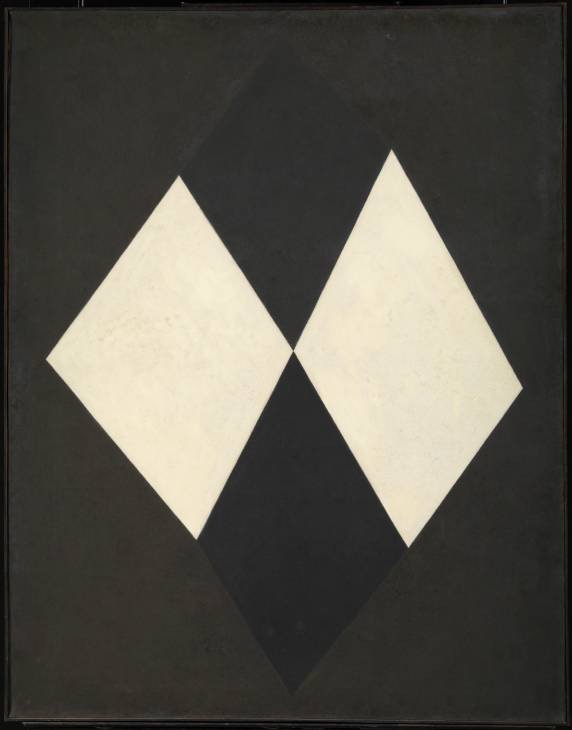23/9/2013
Mira Schendel
Tate Modern, London
Schendel is one of Latin America's most important and prolific post-war artists. The exhibition brings together over 300 paintings, drawings and sculptures from across her entire career. Schendel's early experience of cultural, geographic and linguistic displacement is evident in her work, as is her interest in religion and philosophy.

Tate Modern is to stage the first ever international, full-scale survey of the work of Mira Schendel (1919–1988) from 25 September 2013. Schendel is one of Latin America’s most important and prolific post-war artists. Alongside her contemporaries Lygia Clark and Helio Oiticica, Schendel reinvented the language of European Modernism in Brazil. The show exemplifies how Tate is continuing to rethink and re-present the history of modern and contemporary art by showing artists who established their careers outside Europe and the USA.
The exhibition will bring together over 300 paintings, drawings and sculptures from across her entire career, many of which have never been exhibited before. Highlights include her Droguinhas (Little Nothings) 1965–6, soft sculptures of knotted rice paper in the form of malleable nets, originally exhibited in London (Signals Gallery, 1966); and the Graphic Objects 1967–8, a group of works that explore language and poetry and were first shown at the 1968 Venice Biennale.
Other important works in the show are Schendel’s early abstract paintings, among them Tate’s Untitled 1963; her later monotype drawings on rice paper, of which she made over 2000; and the installations Still Waves of Probability 1969 and Variants 1977. Schendel’s final complete series of works, abstract paintings entitled Sarrafos 1987, are also included. The Sarrafos are white monochromes with a black batten extending from their surface, addressing the body, space and environment of the spectator.
Mira Schendel was born in Zurich in 1919 and lived in Milan and Rome before moving to Brazil in 1949. She settled in São Paolo in 1953, where she married Knut Schendel, and where she lived and worked until her death in 1988. Although brought up as a Catholic, Schendel was persecuted during WWII for her Jewish heritage. She was forced to leave university, due to anti-Semitic laws introduced in Italy, and flee to Yugoslavia.
Schendel’s early experience of cultural, geographic and linguistic displacement is evident in her work, as is her interest in religion and philosophy. She developed an extraordinary intellectual circle in São Paulo of philosophers, poets, psychoanalysts, physicists and critics – many of them émigrés like herself – and engaged in correspondence with intellectuals across Europe, such as Max Bense, Hermann Schmitz and Umberto Eco. Among key exhibitions featuring Schendel’s work were the first and numerous subsequent editions of the São Paulo Bienal; the 1968 Venice Biennale; a solo show at the Galeria de Arte SESI, São Paulo (1997); and Tangled Alphabets with León Ferrari at the Museum of Modern Art, New York (2009).
Mira Schendel is organised by Tate Modern and the Pinacoteca do Estado de São Paulo in association with the Fundação de Serralves - Museu de Arte Contemporânea, Porto. It is curated by Tanya Barson from Tate Modern and Taisa Palhares from the Pinacoteca do Estado de São Paulo. The exhibition is accompanied by an illustrated catalogue by Tate Publishing and a programme of talks and events in the gallery.
Related events
Mira Schendel conference
Friday 16 November – Saturday 17 November 2012, 10.30 – 17.30
Image: Untitled 1963. Oil on canvas support: 1459 x 1140 mm. Presented by Tate Members 2006© The estate of Mira Schendel
Tate Press Office
Kate Moores +44(0)20 7887 8731/4939 - Jeanette Ward +44(0)20 7887 4942 Email pressoffice@tate.org.uk
Tate Modern
Bankside London SE1 9TG
Open every day from 10.00 – 18.00 and late until 22.00 on Friday and Saturday
Adult £11.00 (without donation £10.00)
Concession £9.50 (without donation £8.60)
Help Tate by including the voluntary donation to enable Gift Aid



